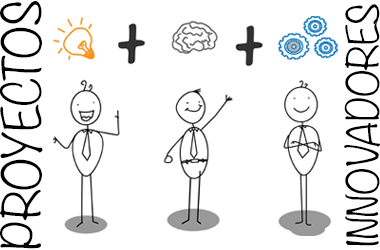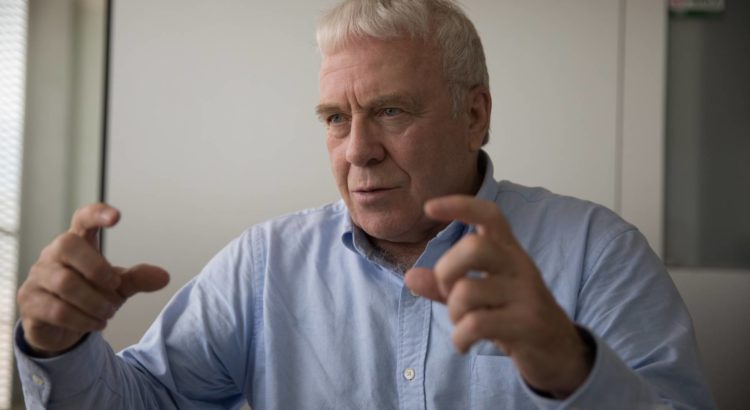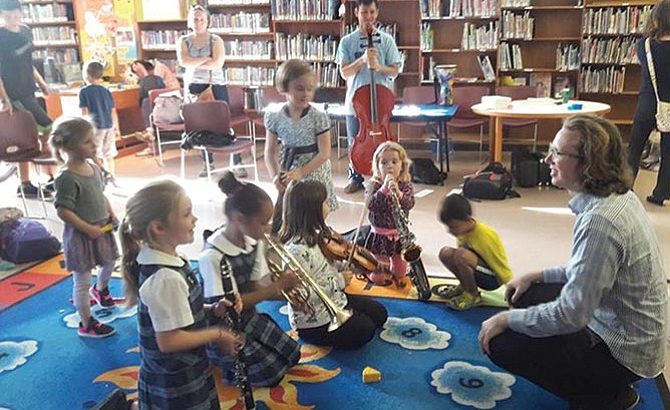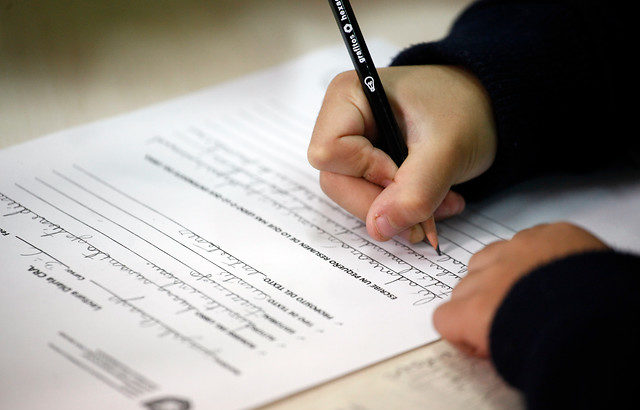Estados Unidos / 8 de octubre de 2017 / Autor: Ana Torres Menárguez / Fuente: El País
En los años 60 David Johnson (Indiana, 1940) y su hermano Roger comenzaron una cruzada contra el aprendizaje competitivo e individualista que imperaba en las escuelas de Estados Unidos. Su objetivo era dar la vuelta a la creencia de que solo los más aptos sobreviven y demostrar que el aprendizaje cooperativo era la clave para encajar en la sociedad, encontrar un empleo en el futuro y saber sobreponerse a la ansiedad. Fundaron el Centro de Aprendizaje Cooperativo de la Universidad de Minnesota y desde entonces han publicado más de 100 investigaciones y han formado a más de un millón de profesores de diferentes partes del mundo. Hoy tienen centros formativos en Shanghái, Japón, Noruega o España, donde se enseña una metodología desarrollada por ellos y construida sobre cinco pilares.
Considerados los padres del aprendizaje cooperativo, los hermanos Johnson fueron los primeros en recopilar y contrastar más de 550 estudios publicados sobre el tema desde 1898 para elaborar después sus propias investigaciones, un trabajo por el que han recibido más de una decena de premios, entre ellos el Brock International Prize for Education en 2007, concedido por la Universidad de Oklahoma.
David Johson, profesor de Psicología Educacional en la Universidad de Minnesota, contestó a las preguntas de este diario en el I Congreso de Innovación Educativa celebrado hace dos semanas en Zaragoza y organizado por el Gobierno de Aragón, un foro de dos días al que acudieron 1.400 profesores para intercambiar experiencias sobre las últimas metodologías en el aula.
Pregunta. ¿Qué es el aprendizaje cooperativo y por qué se debería usar en las escuelas?
Respuesta. Mucha gente tiene una idea equivocada. Juntar a personas en la misma habitación, sentarlas en círculo y decirles que son un grupo no quiere decir que vayan a cooperar de forma efectiva. Es necesario que se den cinco elementos esenciales que son los que integran nuestra metodología. El más importante es la interdependencia positiva, que implica que todos los integrantes del grupo perciban que el éxito individual no se dará si no triunfan todos. Si uno falla, todos pierden. La clave es entender que los esfuerzos individuales no serán en beneficio propio, sino del grupo. Este método de trabajo consigue que las personas se preocupen por el éxito de los demás, un elemento básico para la convivencia. Si las escuelas promueven la cultura de ser el número uno, a la vez están animando a esos mismos alumnos a desalentar y obstruir los esfuerzos de los otros. En las competiciones solo ganan unos pocos.
P. Sus estudios han demostrado que la competitividad entre alumnos no mejora los resultados académicos. ¿Por qué sigue instalado ese sistema en las escuelas?
R. A mediados de los sesenta cuando Roger y yo comenzamos a interesarnos por el tema, la competitividad y el individualismo dominaban los sistemas de enseñanza en primaria, secundaria y en la Universidad. Era el llamado darwinismo social, que consiste en aplicar la teoría de la evolución de Darwin al campo educativo: los estudiantes tienen que aprender a sobrevivir en un mundo en el que unos se comen a otros y solo los más aptos sobreviven. En ese momento, el aprendizaje cooperativo era relativamente desconocido e ignorado por los educadores. Afortunadamente, hoy es una de las metodologías escogidas en todos los niveles educativos. Es muy raro encontrar a un profesor que no conozca este tipo de aprendizaje.
P. ¿Cuál es el principal problema que se da en las aulas?
R. Se ignora completamente la interacción entre los estudiantes. Los programas de formación del profesorado destinan la mayor parte del tiempo a enseñar a los docentes a lidiar con los alumnos y les muestran cómo deben reaccionar a los materiales de clase. Sin embargo, la interacción entre los alumnos es esencial y dice mucho de cómo aprenderán o de cuánta autoestima serán capaces de adquirir. No tiene sentido que los estudiantes compitan entre ellos para ver quién saca un sobresaliente y se sitúa por encima de los demás. Ese modelo ha caducado y hasta las empresas tecnológicas como IBM contratan a los que saben trabajar en grupo. A principios de los 2000 una investigación de una consultora señaló que el principal motivo por el que los estadounidenses dejan su trabajo es la falta de habilidades sociales de su jefe. El individualismo ya no vale.
P. ¿Por qué se les considera los padres del aprendizaje cooperativo? ¿Qué han aportado que no hicieran las investigaciones previas?
R. Se nos puede considerar los pioneros del aprendizaje cooperativo de la edad moderna, pero antes de nosotros hubo decenas de autores. El filósofo romano Séneca abogaba por este tipo de aprendizaje con afirmaciones como Qui docet discet, que quiere decir que el que enseña aprende dos veces. En el movimiento por la escuela pública de los Estados Unidos de comienzos del siglo XIX también hubo una fuerte defensa de esta corriente. No es algo nuevo. El hecho de enfrentarse a puntos de vista opuestos genera incertidumbre y conduce a la persona a buscar más información para conseguir una conclusión más refinada y razonada. Además, nuestros estudios demuestran que el alumno debe reestructurar la información para retenerla en la memoria y una forma de lograrlo es explicar algo en voz alta a un tercero.
P. De sus estudios se desprende que el aprendizaje cooperativo exige más esfuerzo y pese a ello resulta más atractivo para los estudiantes.
R. Los beneficios se pueden dividir en tres grandes grupos: un mayor esfuerzo para el logro, una mejora de las relaciones interpersonales y también de la salud psicológica. El cooperativo es más complejo que el individualista porque el alumno tiene que conectar al mismo tiempo con la tarea que debe realizar y con el grupo. Los miembros del equipo tienen que aprender a liderar, a decantarse por un punto de vista, a comunicar o a manejar los conflictos. Nuestras investigaciones demuestran que trabajan más duro cuando lo hacen en grupo que en solitario. Aumenta la retención de información, tienen mayor capacidad para desarrollar argumentos, mayor motivación para seguir aprendiendo después de clase y mejores estrategias para la resolución de problemas.
P. Parece que los estudiantes que cooperan saben manejar mejor su carácter y tienen mayor resistencia a la ansiedad. ¿Por qué?
R. Cada vez que dos estudiantes trabajan juntos, la relación cambia: se entienden mejor, se aceptan y se apoyan mutuamente tanto en lo académico como en lo personal. Cuando no compiten, mejora su salud mental; ganan autoestima y mejora su habilidad para lidiar con el estrés. El grado de vinculación emocional entre los estudiantes tiene un profundo efecto en su comportamiento en el aula. Cuanto más positiva es esa relación, menores son las tasas de absentismo y de abandono. El sentimiento de responsabilidad sobre el grupo incentiva las ganas de emprender proyectos de mayor dificultad y mejora la motivación y la persistencia para alcanzar una meta conjunta. El grupo se siente unido frente a ataques externos o críticas y crece el compromiso por el crecimiento personal y académico del resto de miembros del equipo. Los niños que requieren tratamiento psicológico suelen tener menos amigos y sus amistades son menos estables a largo plazo. La esencia de la salud psicológica es la habilidad de construir, mantener y modificar las relaciones con los demás para conseguir determinados objetivos. Los que no son capaces de gestionarlo suelen presentar mayores niveles de ansiedad, depresión, frustración y sentimientos de soledad. Son menos productivos y más inefectivos en combatir la adversidad.
Fuente de la Entrevista:
https://elpais.com/economia/2017/10/02/actualidad/1506942650_496359.html















 Users Today : 16
Users Today : 16 Total Users : 35460473
Total Users : 35460473 Views Today : 28
Views Today : 28 Total views : 3419323
Total views : 3419323